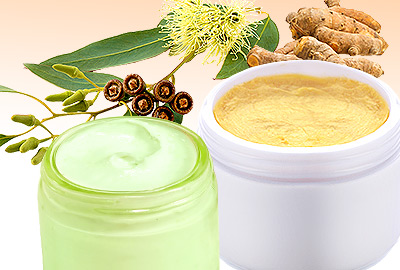While joint pain is often disregarded as an inevitable sign of aging, middle-aged women do have a say about their health. With the right approaches, they can reduce the pain, protect their joints, and improve their quality of life. Continue reading to discover how to relieve joint pain to finally break free from this incapacitating symptom today!
Three Approaches to Treating Joint Pain
To relieve joint pain, women can choose from among three approaches: (1) Lifestyle changes, (2) Alternative medicine, and (3) Conventional medicine, with a strong preference for natural options and proceeding to conventional ones only if necessary.
Lifestyle Changes for Joint Pain Treatment

The first level of treatment, consisting of making simple lifestyle changes, carries the least amount of risk, but requires the most determination. Nevertheless, it can be a valuable tool in treating joint pain.
Nutritious Diet
Although a woman's diet on its own is not a sufficient joint pain treatment, it may help improve overall health by preventing chronic conditions, reducing inflammation in the body, and helping maintain a normal weight. A menopause diet should include protein, healthy fats, and complex carbs that are rich in the following nutrients:
- Phytoestrogens are plant-based compounds that act as weak estrogens in the body, thus helping to balance hormones and alleviate unpleasant symptoms like joint pain.
Soy, oats, mung beans, alfalfa
- Vitamin K plays an important role in bone and cartilage mineralization, and its proper levels may aid in joint pain treatment.1
Kale, tomatoes, swiss chard, parsley, kiwi
- Omega-3 fatty acids have been shown beneficial for reducing joint inflammation and pain as well as improving weight bearing, especially in women with arthritis.2
Walnuts, flax, fish, olive oil, sacha inchi
- Vitamin D deficiency, especially in older adults, can produce pain in the joints and muscles of the upper or lower extremities and hips.3
Eggs, mushroom, tuna, salmon, carrots
Regular Exercise
Exercise is an important strategy in joint pain treatment. It helps support the joints, improve mobility and range of motion, and prevent weight gain. The latter is a very important benefit of exercise for joint pain relief as obesity can put a further strain on the joints and worsen symptoms.4
Amount: Healthy adult women are recommended to get at least 150 minutes of moderate-level exercises or 75 minutes of vigorous workouts per week.5
Type: For lasting results, women should focus on low-impact aerobics, such as walking, with gentle muscle-strengthening exercises, like stretches, yoga, or Pilates.
Useful tips: To relieve joint pain, it is important to choose workouts that do not put too much weight on the joints. Great options include swimming or biking.
Precautions: Women with joint pain passing through menopause are advised to avoid activities that are injury-prone, especially to the joints. It is also key to bear in mind that osteoporosis is higher in aging adults.6
Wholesome Habits
Once a woman optimizes her diet and keeps up with regular exercise, she can focus on improving other daily habits to complement her joint pain treatment. Together, they will help her create a lifestyle that keeps joint pain at bay and boosts her overall health.
Relieving stress should be included in every menopausal joint pain treatment plan as high cortisol levels can disrupt hormonal equilibrium, triggering pesky symptoms.7 Opt for mindfulness, breathing, or biofeedback.
Wearing flat, comfortable, and well-fitted shoes will take the stress off joints in the legs and also prevent falls or fractures.
Preventing repetitive movements or sitting for an extended period of time can ease joint paint and stiffness. Women with joint pain should get up, move around, or do simple stretches frequently throughout the day.
Giving alternative therapies - like acupuncture - a try may provide some relief from joint pain, although scientific evidence is not always conclusive.8
Quitting addictions is key in joint pain treatment. Studies have shown nicotine increases pain sensitivity and may lead to cartilage loss, while alcohol may lead to nutritional deficiencies and dehydration, resulting in joint pain.9,10
Alternative Medicine for Joint Pain Treatment

Alternative interventions are the second level of treatment for joint pain. The most common approach are herbal supplements, which are easy to take and tackle the underlying root of the symptoms, hormonal imbalance.
There are two types of herbal supplements that can be used for joint pain: phytoestrogenic and hormone-regulating supplements.
Phytoestrogenic Supplements
Phytoestrogenic supplements, like black cohosh, contain compounds called phytoestrogens, which work like estrogen in the body. In doing so, they help regulate imbalanced levels of estrogen and other reproductive hormones to alleviate joint pain and other menopausal symptoms. While beneficial, phytoestrogenic supplements should not be used long-term as they can lead to dependency and further worsen the hormonal imbalance.
Hormone-Regulating Herbal Supplements
Hormone-regulating supplements, like Macafem, do not supply the body with outside hormones. Rather, they nourish the hormonal glands with ample nutrients that are necessary for balanced hormone production. Because they are one of the safest and most effective treatments for joint pain, hormone-regulating supplements can be taken long-term for lasting hormonal balance and a symptom-free life.
From Nature and Health Magazine, Dr. Chacon says:
"Macafem's nutrients help restore natural hormones in women. Unlike hormone drugs, which are basically resumed in taking synthetic hormones, Macafem acts totally different in your body. It nourishes and stimulates your own natural hormone production by inducing the optimal functioning of the pituitary and endocrine glands." Click on the following link to learn more about Macafem.
A combination of lifestyle changes and herbal supplements is often the most effective and comprehensive joint pain treatment. However, women with severe symptoms may need medication, physical therapy, or surgery to relieve them.
Conventional Medicine for Joint Pain Treatment

The third level of joint pain treatments involves the highest cost, and some may come with high risks of side effects. Nevertheless, they may be a necessary component of an effective treatment plan.
Conventional joint pain treatments may include a variety of medications, physical therapy, and surgery.
Medications
The options for medications for joint pain are not extensive and will mainly focus on reducing inflammation and relieving pain. They may include the following:
Pain relievers, such as acetaminophen or ibuprofen, can be used to relieve acute pain. They can be taken orally or through injections.
Corticosteroid injections can be given to reduce inflammation, thus alleviating pain and swelling.
Hormone replacement therapy (HRT) was once the most widely prescribed treatment for joint pain and other menopausal symptoms. While effective, HRT has been found to increase the risk of serious side effects and health risks, as shown in the studies below. For this reason, its use is reserved for women with severe symptoms.
Physical Therapy
A solution to how to treat joint pain often lies in physical therapy with a trained professional. Over time, physical therapy can help increase mobility in painful joints, strengthen them, and help women maintain their daily functions at their best.
Procedures & Surgery
Some women may require joint aspiration, which is an outpatient procedure consisting of removing excess fluid from a swollen joint. It is often followed with steroid injection to treat the inflammation.
In rare cases of severe damage to the joint, women may need joint replacement surgery to restore mobility. It consists of removing the affected joint and replacing it with a new, functional one.
The above approaches can be applied in combination as necessary to best relieve joint pain. A growing number of women are finding that a combination of lifestyle changes complemented by alternative medicine offers the best relief from pain and discomfort.
A Safe Way of Treating Joint Pain
Implementing Lifestyle Changes:
- Eating regular meals with fiber, probiotics, and phytoestrogens
- Focusing on low to moderate exercises for 150 minutes weekly
- Relieving stress through abdominal breathing and visualizations
- Quitting addictions and maintaining a healthy sleep schedule
And Taking Herbal Supplements:
- Phytoestrogenic herbal supplements, like red clover
- Or natural hormone-regulating supplements, like Macafem
Sources
- American College of Rheumatology. (2019). Joint Injections (Joint Aspirations). Retrieved July 4, 2020 from https://www.rheumatology.org/I-Am-A/Patient-Caregiver/Treatments/Joint-Injection-Aspiration
- Arthritis Foundation. (n.d.). 16 Joint-protection tips. Retrieved July 4, 2020 from https://www.arthritis.org/health-wellness/healthy-living/managing-pain/joint-protection/16-joint-protection-tips
- Arthritis Foundation. (n.d.). Physical Therapy for Arthritis. Retrieved July 4, 2020 from https://www.arthritis.org/health-wellness/treatment/complementary-therapies/physical-therapies/physical-therapy-for-arthritis
- Arthritis Research & Therapy. (2007). Arthritis and pain. Current approaches in the treatment of arthritis pain.
- CDC. (2020). Arthritis. Retrieved July 4, 2020 from https://www.cdc.gov/arthritis/pain/index.htm
- Better Health. (2019). Arthritis and diet. Retrieved July 4, 2020 from https://www.betterhealth.vic.gov.au/health/conditionsandtreatments/arthritis-and-diet
- Healthy People. (n.d.). Arthritis, Osteoporosis, and Chronic Back Conditions. Retrieved July , 2020 from https://www.healthypeople.gov/2020/topics-objectives/topic/Arthritis-Osteoporosis-and-Chronic-Back-Conditions
- Medline Plus. (2020). Arthritis. Retrieved July 4, 2020 from https://medlineplus.gov/arthritis.html
- Medline Plus. (2020). Joint Disorders. Retrieved July 4, 2020 from https://medlineplus.gov/jointdisorders.html
- National Institute of Arthritis and Muscoskeletal and Skin Diseases. (2016). Joint replacement surgery. Retrieved July 4, 2020 from https://www.niams.nih.gov/health-topics/joint-replacement-surgery
- National Institute on Aging. (2917). Osteoarthritis. Retrieved July 4, 2020 from https://www.nia.nih.gov/health/osteoarthritis
Footnotes:
- Rheumatology. (2018). What is the evidence for a role for diet and nutrition in osteoarthritis? Retrieved July 4, 2020 from Retrieved July 3, 2020 from
- Vitamins and Hormones. (2008). Vitamin K-dependent carboxylation. Retrieved July 4, 2020 from https://pubmed.ncbi.nlm.nih.gov/18374193/
- Annals of the Rheumatic Diseases. (2014). Moderate vitamin D deficiency is associated with changes in knee and hip pain in older adults: a 5-year longitudinal study. Retrieved July 4, 2020 from https://pubmed.ncbi.nlm.nih.gov/23595144/
- PLOS ONE. (2007). Effective treatment options for musculoskeletal pain in primary care: a systematic overview of current evidence. Retrieved July 4, 2020 from https://journals.plos.org/plosone/article?id=10.1371/journal.pone.0178621
- American Heart Association. (2018). Recommendations for Physical Activity in Adults and Kids. Retrieved July 4 , 2020 from https://www.heart.org/en/healthy-living/fitness/fitness-basics/aha-recs-for-physical-activity-in-adults
- CDC. (2019). Managing Arthritis: Strive for Five. Retrieved July 4, 2020 from https://www.cdc.gov/arthritis/basics/management.htm
- A Journal of Mid-Life Health. (2011). Exercise beyond menopause: Dos and Don'ts. Retrieved July 4, 2020 from https://www.ncbi.nlm.nih.gov/pmc/articles/PMC3296386/
- Arthritis Foundation. (n.d.). Acupuncture for Arthritis. Retrieved July 4, 2020 from https://www.arthritis.org/health-wellness/treatment/complementary-therapies/natural-therapies/acupuncture-for-arthritis
- Annals of the Rheumatic Diseases. (2007). Cigarette smoking and the risk for cartilage loss and knee pain in men with knee osteoarthritis. Retrieved June 4, 2020 from https://www.ncbi.nlm.nih.gov/pmc/articles/PMC1798417/
- Creaky Joints. (n.d.). Alcohol and Arthritis: How Drinking Affects Your Joints, and 4 Tips for Imbibing Safely. Retrieved June 4, 2020 from https://creakyjoints.org/living-with-arthritis/alcohol-and-arthritis/
- JAMA. (2002). Risks and benefits of estrogen plus progestin in healthy postmenopausal women: principal results from the Women's Health Initiative randomized controlled trial. Retrieved June 4, 2020 from https://www.ncbi.nlm.nih.gov/pubmed/12117397
- The Lancet. (2019). Type and timing of menopausal hormone therapy and breast cancer risk: individual participant meta-analysis of the worldwide epidemiological evidence. Retrieved June 4, 2020 from https://www.thelancet.com/journals/lancet/article/PIIS0140-6736(19)31709-X/fulltext



